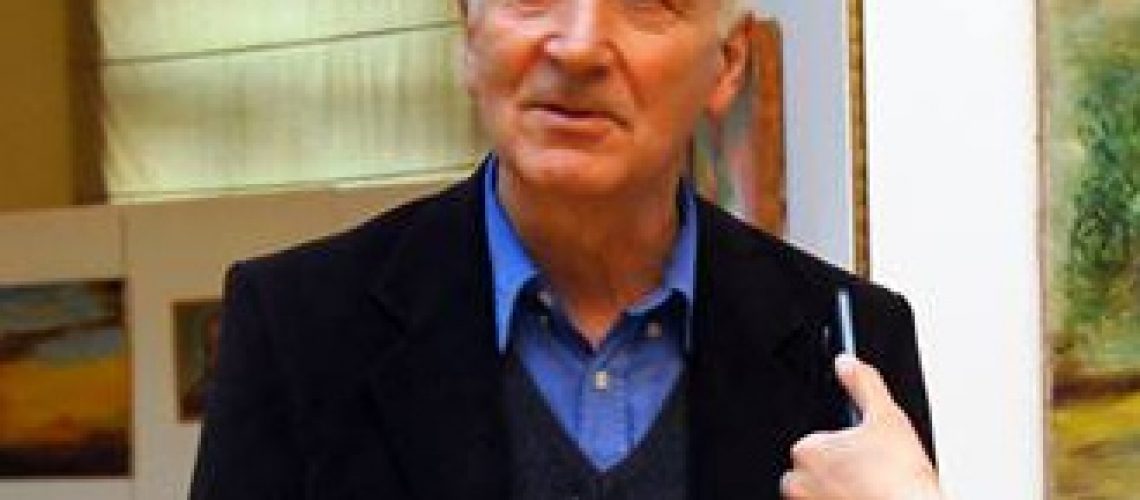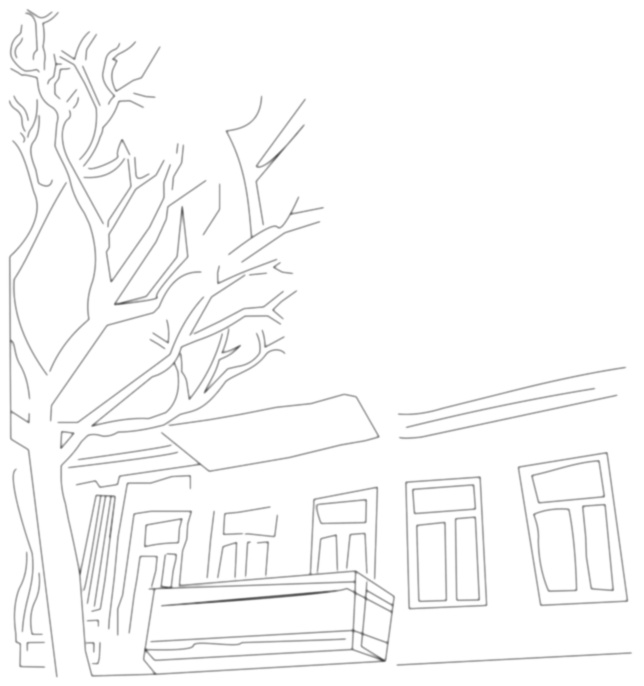Tbilisi, January 2019
On 23 January, at the Institute’s office located on the IV floor of III building of Georgian public broadcaster (1st channel), Mattia Baldoni, Gabriele Rota and Tommaso de Vivo, had a meeting with Irakli Avalishvili, physicist and talented painter as well as Tommaso’s close friend.
Tommaso presented Irakli as a physicist and painter. Irakly replied this presentation telling that his main interest is by now art, thus if the Institute’s members cannot tell at the moment of the writing of the report, how Irakli eventually argumented this shift of his current interests, of whether he just felt himself more comfortable talking with Mattia, Gabriele and Tommaso about art, rather than about science.
Irakli looked around, addressing his glance towards the white walls of the office, and Tommaso took the opportunity to asking him what he thought about them.
Indeed, Irakli was present during the first installation of the Institute at this office, since when it was in bad state, with the walls sprinkled with screws and cartons placed therein in order to soundproof the room, and holes and moisture spots.
Irakli was present in that very first moment, and he provided Tommaso with the help of Alek …., in turn painter, who helped Tommaso with the renovation of the office in a first moment. Indeed, Tommaso did not delegated completely such renovation, but (as he could) participated with it and now he was proud to showing the results to everybody.
Also, Irakli told something about Alek, the painter (as well as master) who participated and started the renovation work, which once more who now is writing cannot precisely remember.
In his turn, Tommaso pointed out that the general condition of the office, was now “not perfect, but much better” than the initial condition, and he ascribed, indeed, all the imperfections and the amateurish elements of the work, to his own participation.
Irakli looked around a bit more and asked about a print of a painting behind Tommaso’s shoulders, and … Tommaso laughed, having misunderstood the reference of Irakli’s interest, to something else. When he realized that he was referring to the printed painting posted on the bulletin board of the classroom, he explained to Irakli that it was a work by a painter living behind the parliament, on the street which ascends from Ingorvoka st., who makes nice, but a bit childish paintings.
Irakli at first did not understand this word, which Tommaso repeated several times, then Tommaso tried to express the concept: these paintings tends to be all “bi-dimensional”, they don’t have, by definition, a great depth, and so on. At the same time Gabriele tried to use — with his linguistic sensibility — other synonyms to express the same word, and likely Irakly understood.
Also, Tommaso presented, or tried to do so, the art of Irakli himself to Mattia and Gabriele, telling that in his opinion his paintings are “really wonderful”, and that they have a visionary and dreamlike character, which is very difficult to achieve.
Here, he would add that a visionary and dreamlike character is so difficult to paint precisely because you are prevented to observe it, and because it is undefined by definition: precisely like dreams are.
Then Irakli added that somebody else defined his art … something that once more who write cannot remind whilst writing down this report, and then he added, with regard to that definition received by somebody else, that in the classic times there were all the styles nowadays considered modern, and he formulated a fairly precise list. [ask to Irakli to remind about it]
Of course that statement was interesting and all of them, Tommaso and Gabriele and Mattia wrote it down in their minds.
Then Irakli started to talk about his sons, Koka and Niko, who also demonstrated a similar, and possibly even greater, talent for art. He presented the first as being very rational and “realist” in his works, while the other, Niko, in Irakli words, is “pure talent”.
Then Irakli did a statement extremely nice and in a way paradigmatic. He said that his own art is in the middle between that of Kaka, and Niko. (his sons)
In other words he explained something that, supposedly, comes first, through something which came later, overturning the usual way of reasoning a showing a deep and admirable respect for his own sons.
Indeed, Tommaso since the beginning presented Irakli to Mattia and Gabriele as somebody to be known namely for his family and his personal history. Besides being (theoretical) physicist and painter, even if objectively his art achieves a greater level of completeness in the first case rather than in the second, he has also been war veteran, and has an high number of children, all different and recently entered in the adult age, with whom he lives as an older brother, rather than as a “father”, and sharing with them, probably
as a peer, the loss of his wife and children’s’ mother, occurred several years before.
Tommaso, being aware of the richness of this family, and recognizing a certain similarity between Mattia and Niko, had the intention to let the one get acquainted with the other [or: “to make one another known], as one can find in this history, which had precisely this presupposition.
Who now is writing and integrating such report has also to add that whilst Irakli and Tommaso were talking about the condition of the new office, there was a mention from Irakli regarding a quite big and interesting space, for which both had fairly long negotiations, which indeed was own by the “Georgian Afghan war veterans”, or even more precisely (as Tommaso noted) “Union of Georgian Afghan war veterans”.
When Irakli mentioned that space, informally named between the two as “Kommissariat”, for being the old seat of a commissariat in the upper Sololaki area, Tommaso described it shortly to Mattia and Gabriele, as a space towards which they have interest as a headquarter for the Institute, and to be considered very useful and appropriate for the use during spring and summer (if not well heated during the winter), both for the position, being surrounded by the nature and at the same time located in the city’s centre, and for its big size. (this considerations took place, conceivably before talking about art, as mentioned)

